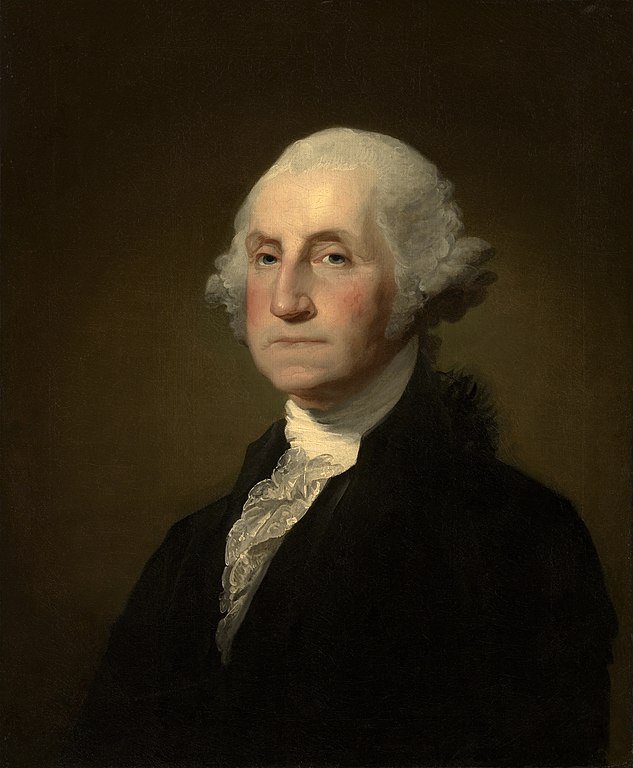FEBRUARY 22, 2023 – Today, as any school kid of my generation could tell the teacher, is George Washington’s birthday. It wasn’t a hard thing to forget when in the first few years of grade school, February 22 featured some prominent reminder: cherry cupcakes for lunch; a story reading by the teacher; an art project centered around cherry trees made from construction paper. In second grade our teacher, Mrs. Lundring, who seemed old enough to have been personally acquainted with Washington, demonstrated Revolutionary courage by having us draw portraits of the first president, then pinning them in a row above the chalkboard. They looked more like a rogues gallery than pictures of the same revered statesman.
For artistic guidance, Mrs. Lundring had taped a copy of the Gilbert Stuart portrait to the center of the chalkboard. We couldn’t have done worse with a picture of Bozo the Clown. None of us was yet an artist, though I do remember several pictures in which Washington’s eyes were depicted as black circles with true blue pupils rather than primitive black dots. Mine had the circle eyes with blue pupils, but only because I got the idea from the kid across from me in the next row, not from Gilbert Stuart’s version staring us down from the chalkboard.
When I was a fifth grader, my dad told me about Washington’s famous Farewell Address, which I imagined being delivered to throngs of well-wishers. Only later did I learn that the address wasn’t a speech but a written valedictory first published in the Daily American Advertiser, a leading Philadelphia newspaper, on September 19, 1796, less than two months before that year’s general election. The address is considered among the most important documents of our nation’s formative years.
Years had passed since I’d read Washington’s thoughtful recommendations to the citizenry of the young Republic. Today, I decided to take another look. Three aspects stood out: 1. The embellished prose, reflective of the style of the day; 2. Washington’s deep commitment to thoughtful public service; and 3. Most important, the fact he was stepping down as President, despite his sure-bet chance for a third term. Washington’s precedent was followed for the next 142 years (until FDR ran for a third term; before the 22nd Amendment was ratified in 1951, there was no Constitutional term limit).
This third gesture was arguably as critical to discouraging the rise of authoritarianism as Lincoln’s leadership was to saving the Union when states rightists threatened to dissolve it. To the extent the argument is valid, our democracy owes a considerable debt to Washington.
Yet nothing is permanent, and much about a democracy is fragile. On January 6, the followers of a president with unmistakably authoritarian designs laid siege to the practical and figurative house of representative government. Today a major political party, which masquerades in the cloak of false patriotism, denies how perilously close we came to defaulting on the debt we owe our nation’s Cincinnatus, our country’s farmer-statesman.
Given his admonition against foreign entanglements, we can’t be sure that Washington would support President Biden’s fervent support of Ukraine in its life-struggle against Russia—at least until the realities of the modern world were fully explained to the soldier-stateman. But we can be certain that Washington would condemn categorically—and implore us to do the same—Republicans who fail to resist the authoritarianism that courses through their party.
(Remember to subscribe to this blog and receive notifications of new posts by email.)
© 2023 by Eric Nilsson
